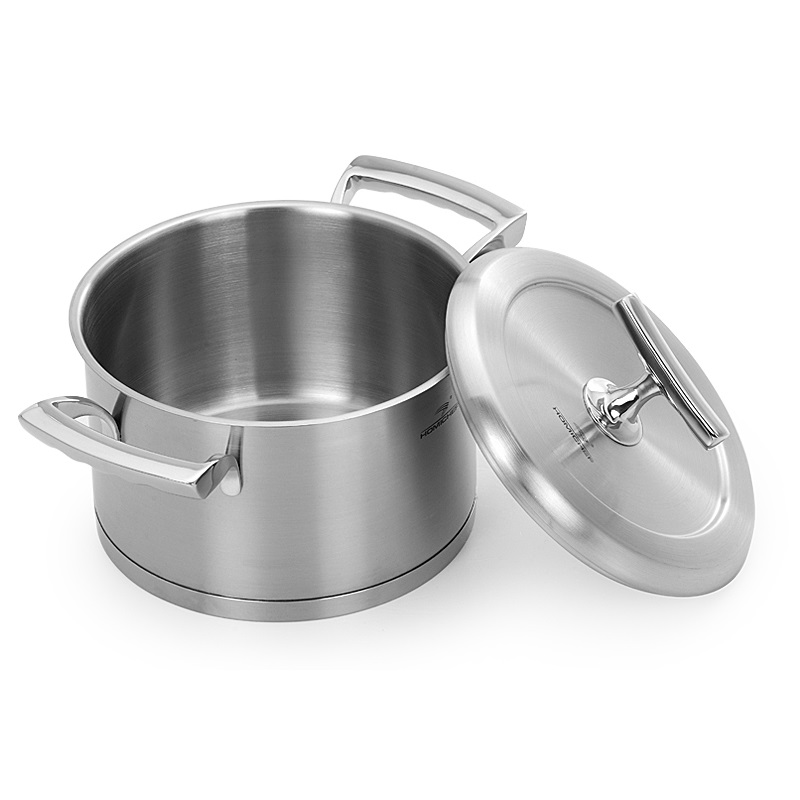At present, most of the stainless steel kitchen utensils on the market do not explain the content of nickel and chromium. How should consumers identify high-quality and low-quality stainless steel products? Some people have proposed magnets to adsorb stainless steel materials to verify their quality and authenticity. Is this method correct? Is there a scientific basis?
First, let's take a look at what is stainless steel:
Stainless steel refers to steel that is resistant to weak corrosive media such as air, steam, and water, and chemically corrosive media such as acid, alkali, and salt (also known as stainless acid-resistant steel in the industry). Stainless steel is a kind of steel that is not easy to rust. Some of the stainless steel has both rust resistance and acid resistance (corrosion resistance). The rust resistance and corrosion resistance of stainless steel are due to the formation of a chromium-rich oxide film (passivation film) on its surface. This kind of rust resistance and corrosion resistance are relative. All stainless steel must contain more than 12% chromium, otherwise it cannot be called stainless steel. The corrosion resistance of stainless steel decreases with the increase of carbon content. Therefore, most stainless steels have low carbon content, and some steels have Cr (carbon content) even lower than 0.03% (such as 00Cr12). The main alloying element in stainless steel is Cr, and only when the Cr content reaches a certain value, the steel has corrosion resistance. Therefore, stainless steel generally has a Cr content of more than 13%. Stainless steel also contains elements such as Ni nickel, Ti titanium, Mn manganese, N nitrogen, and Nb niobium.

Among the five major types of stainless steels that have been developed and applied in the world, austenitic stainless steels, such as 304, 321, 316, 310, etc., are generally non-magnetic; and martensitic or ferrite types: such as 430, 420, 410, etc. , Or ferrite is magnetic. However, due to the fluctuation of chemical composition caused by smelting and the processing of 304 stainless steel by stamping and polishing, the structure will also transform to martensite, and with weak magnetism, the magnet can be attracted, and the greater the degree of processing deformation, the Martensite The more volume conversion, the greater the magnetic properties of steel. Therefore, it is obviously unscientific to judge whether it is 304 stainless steel by whether the magnet can hold it.
So what is the difference between iron and steel? This is the case, the difference between iron and steel lies in the carbon content. Iron-carbon alloys with a carbon content of less than 2% are steel, and those with a carbon content of more than 2% are called iron. For stainless steel, whether the magnet can be attracted or not, as long as it meets the quality standard, it is stainless steel. Secondly, why is stainless steel not attracted? Nickel (four tones of nie): Nickel has very few reserves in the world, and the price is relatively expensive. Therefore, the price of stainless steel with high nickel content is also higher in the market, and the magnet is not attracted. We call this kind of steel austenitic steel.
There is also a stainless steel magnet that cannot be attracted. That is stainless steel with high manganese content and low nickel content or no nickel content. But this steel will be much cheaper than austenitic steel. Except for these two types of stainless steel, the other stainless steels are attracted by magnets. Because of the low thermal conductivity of austenitic stainless steel, it is inappropriate to use it as a kettle, wok, and rice cooker. It will waste energy and prolong the time of boiling water for cooking. Using ferritic stainless steel to make woks and rice pots not only has excellent corrosion resistance, but also its thermal conductivity is nearly half higher than that of austenitic stainless steel. But this kind of stainless steel is sucked, you can go back and try it.
In this way, we can conclude that there are many types of stainless steel, but only two are not attracted by magnets, one is austenitic stainless steel that is mostly used as a decorative material, and the other is stainless steel with high manganese content. Other types of ferrite, martensite and other stainless steels are attracted by magnets. Therefore, the method of using magnetite to identify stainless steel is unscientific and comprehensive!

● Tel: 0750-6580288
● Fax: 0750-6580188
● Email: bruce@m-p-t.com
● Address: Qianfeng Industrial Zone, Siqian Town, Xinhui District, Jiangmen City, Guangdong Province
